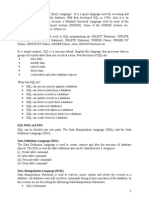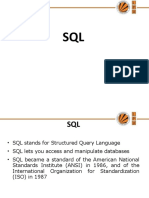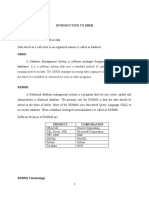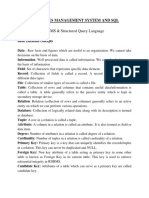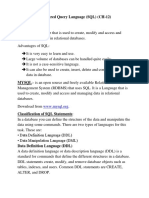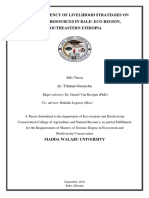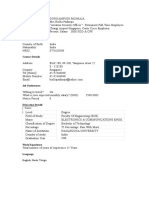0% found this document useful (0 votes)
15 views55 pagesDB Ch7SQL
The document provides an overview of SQL (Structured Query Language), detailing its basic concepts, functionalities, and various commands categorized into Data Definition Language (DDL), Data Manipulation Language (DML), and Data Control Language (DCL). It explains how SQL can be used to create, update, and manage relational databases, including examples of SQL commands and data types. Additionally, it covers SQL constraints, operators, and clauses for filtering and sorting data in queries.
Uploaded by
chalaCopyright
© © All Rights Reserved
We take content rights seriously. If you suspect this is your content, claim it here.
Available Formats
Download as PPTX, PDF, TXT or read online on Scribd
0% found this document useful (0 votes)
15 views55 pagesDB Ch7SQL
The document provides an overview of SQL (Structured Query Language), detailing its basic concepts, functionalities, and various commands categorized into Data Definition Language (DDL), Data Manipulation Language (DML), and Data Control Language (DCL). It explains how SQL can be used to create, update, and manage relational databases, including examples of SQL commands and data types. Additionally, it covers SQL constraints, operators, and clauses for filtering and sorting data in queries.
Uploaded by
chalaCopyright
© © All Rights Reserved
We take content rights seriously. If you suspect this is your content, claim it here.
Available Formats
Download as PPTX, PDF, TXT or read online on Scribd
/ 55
